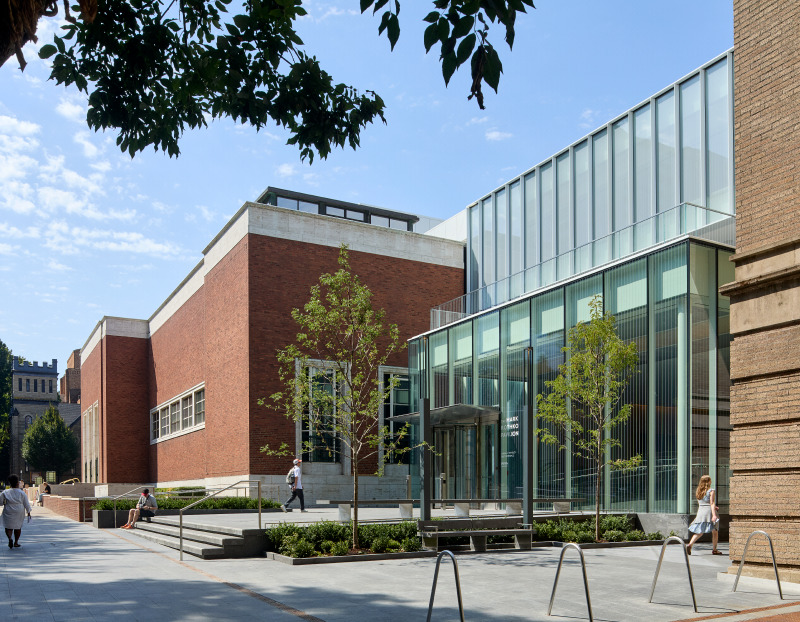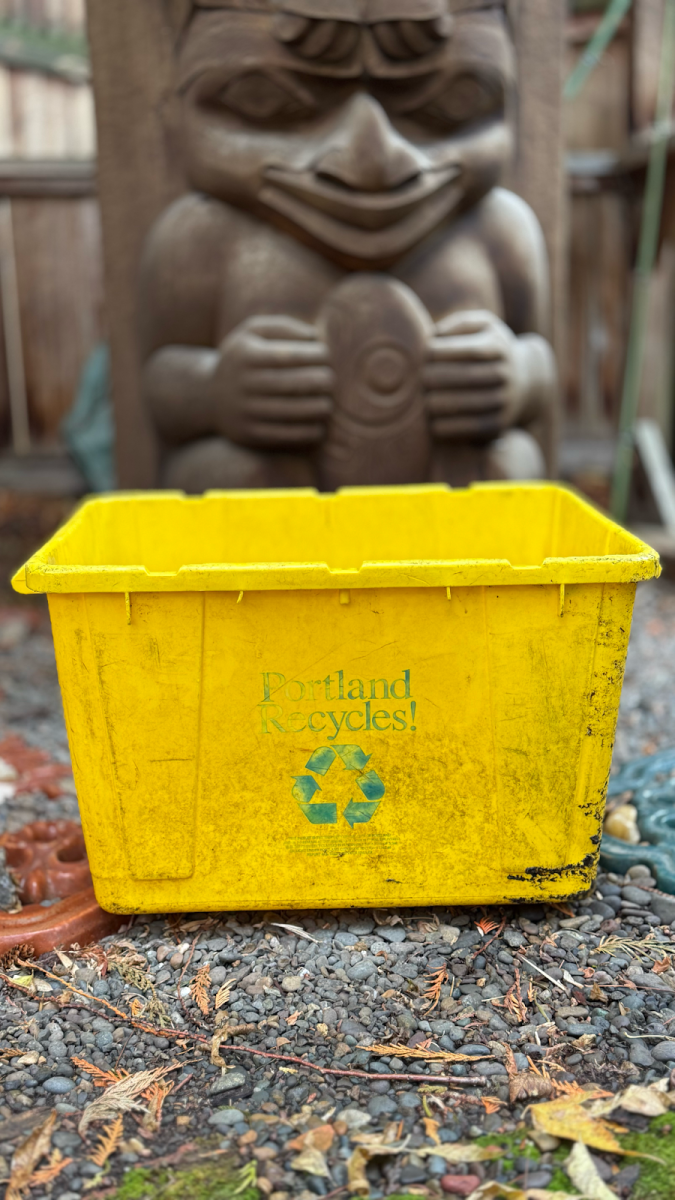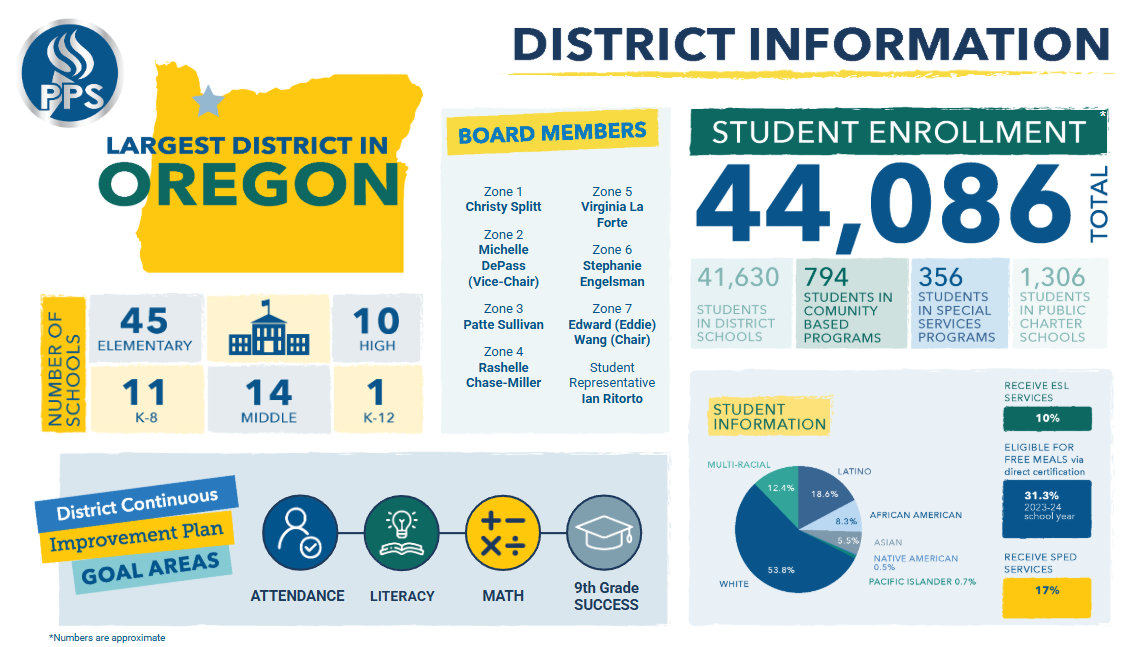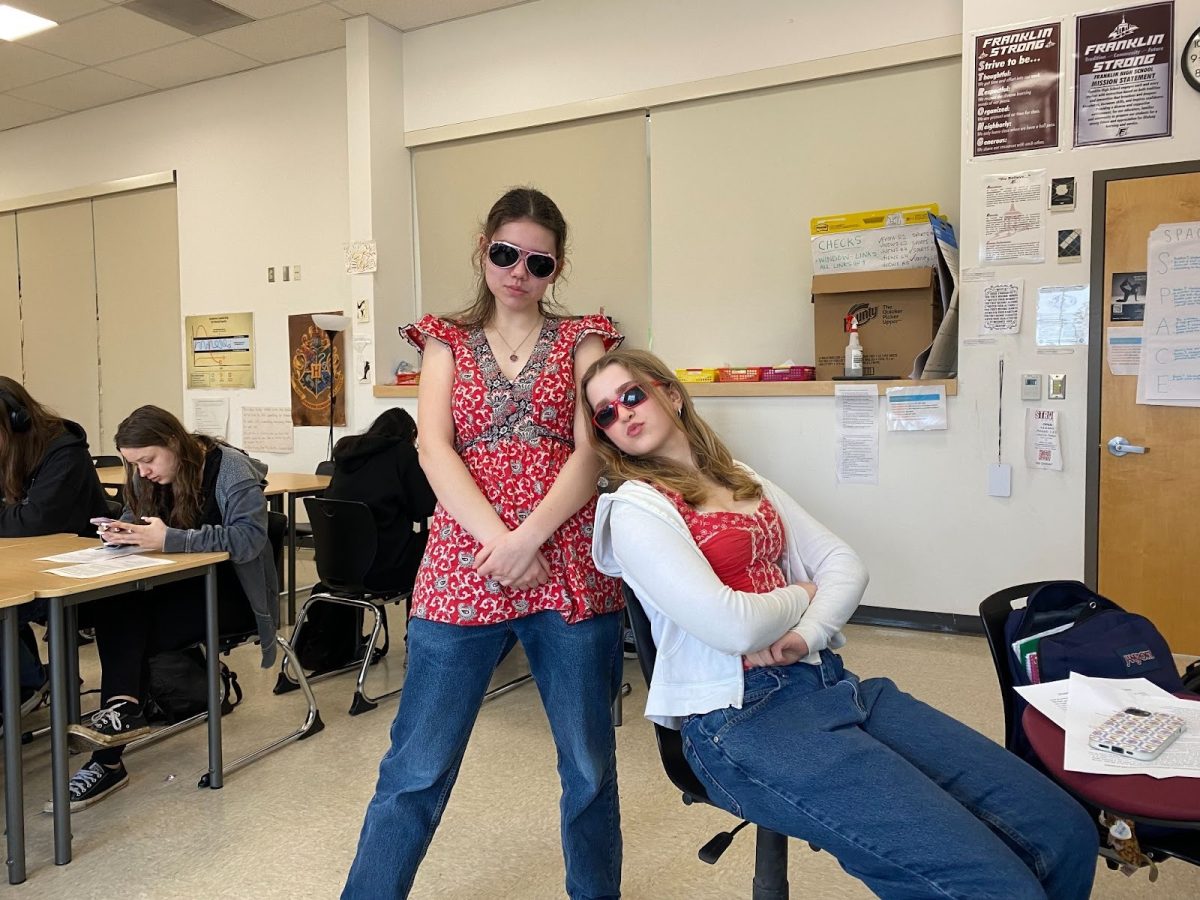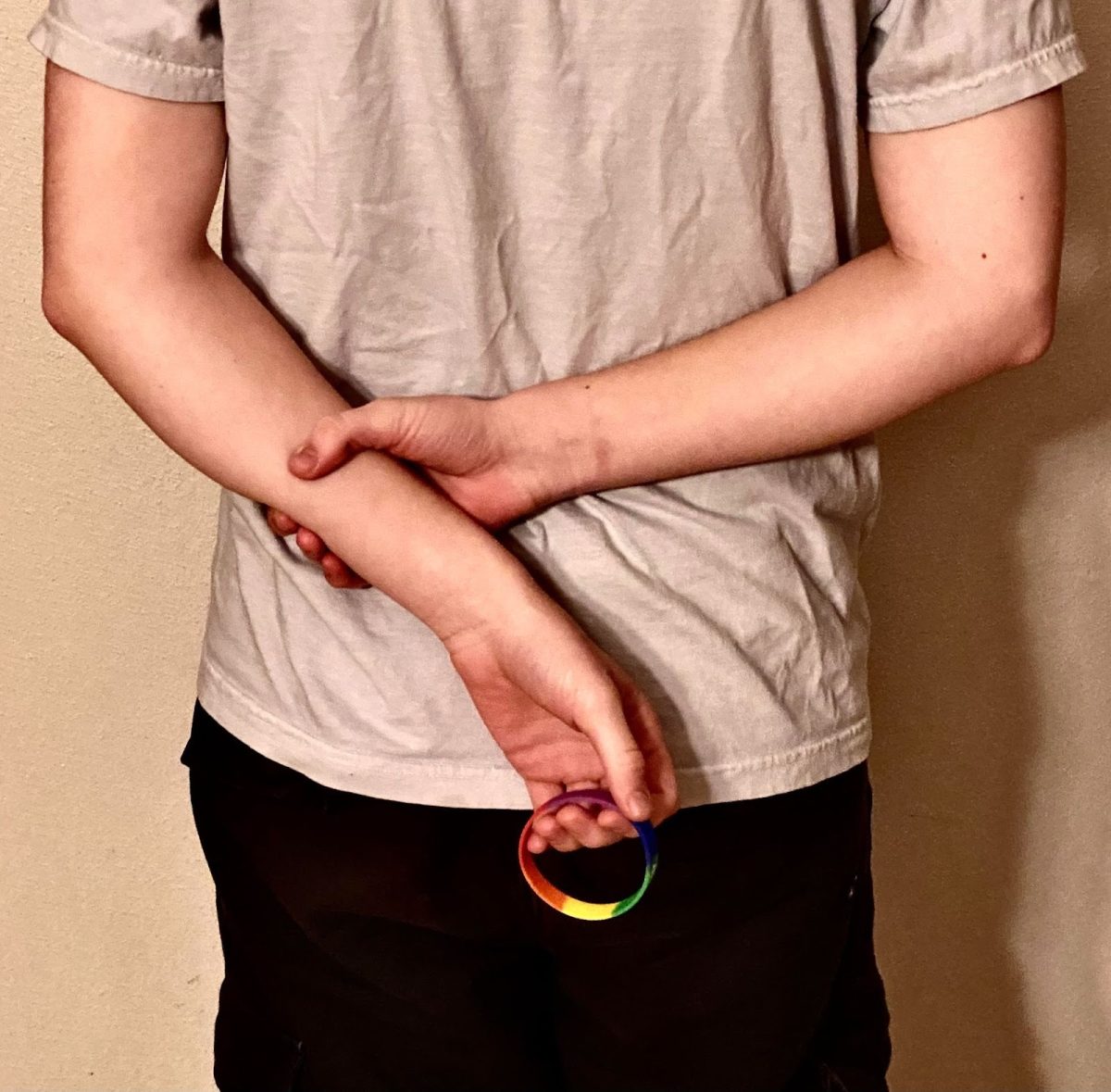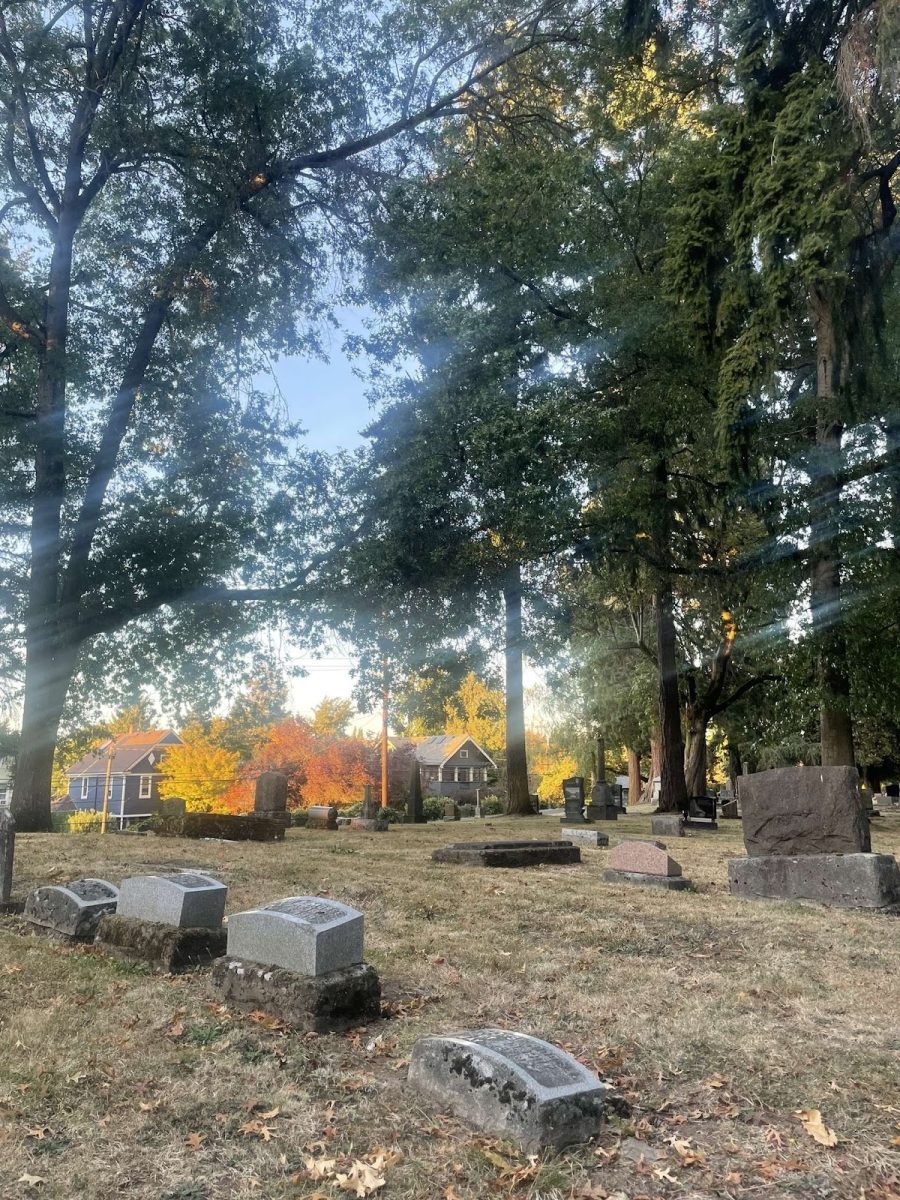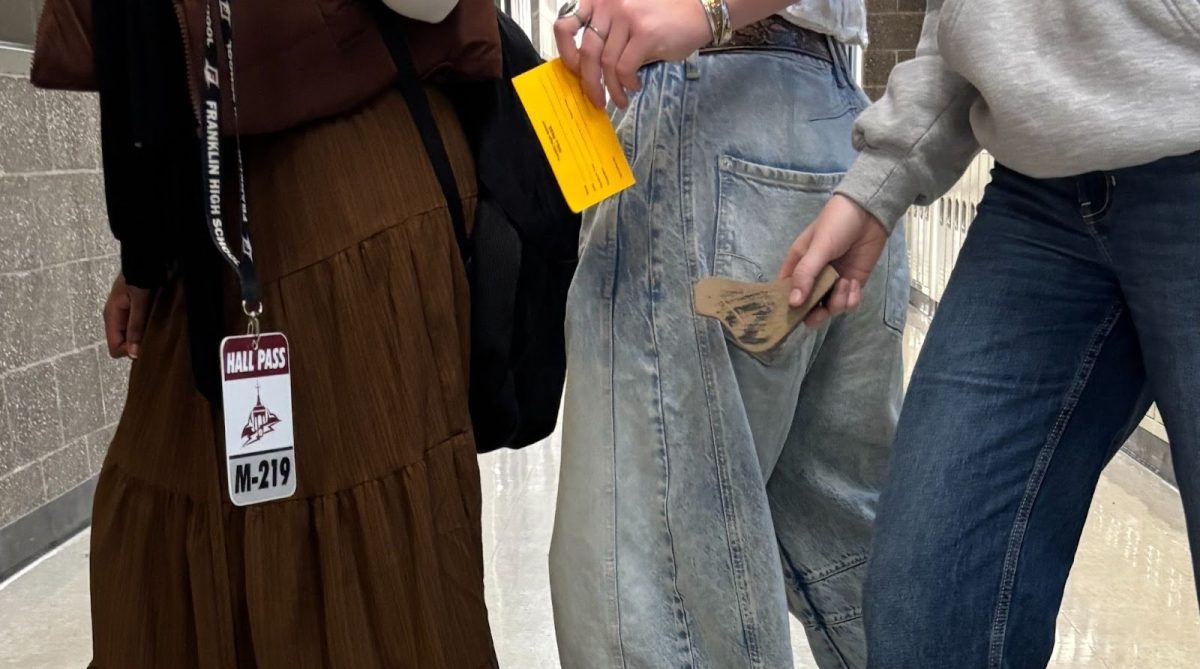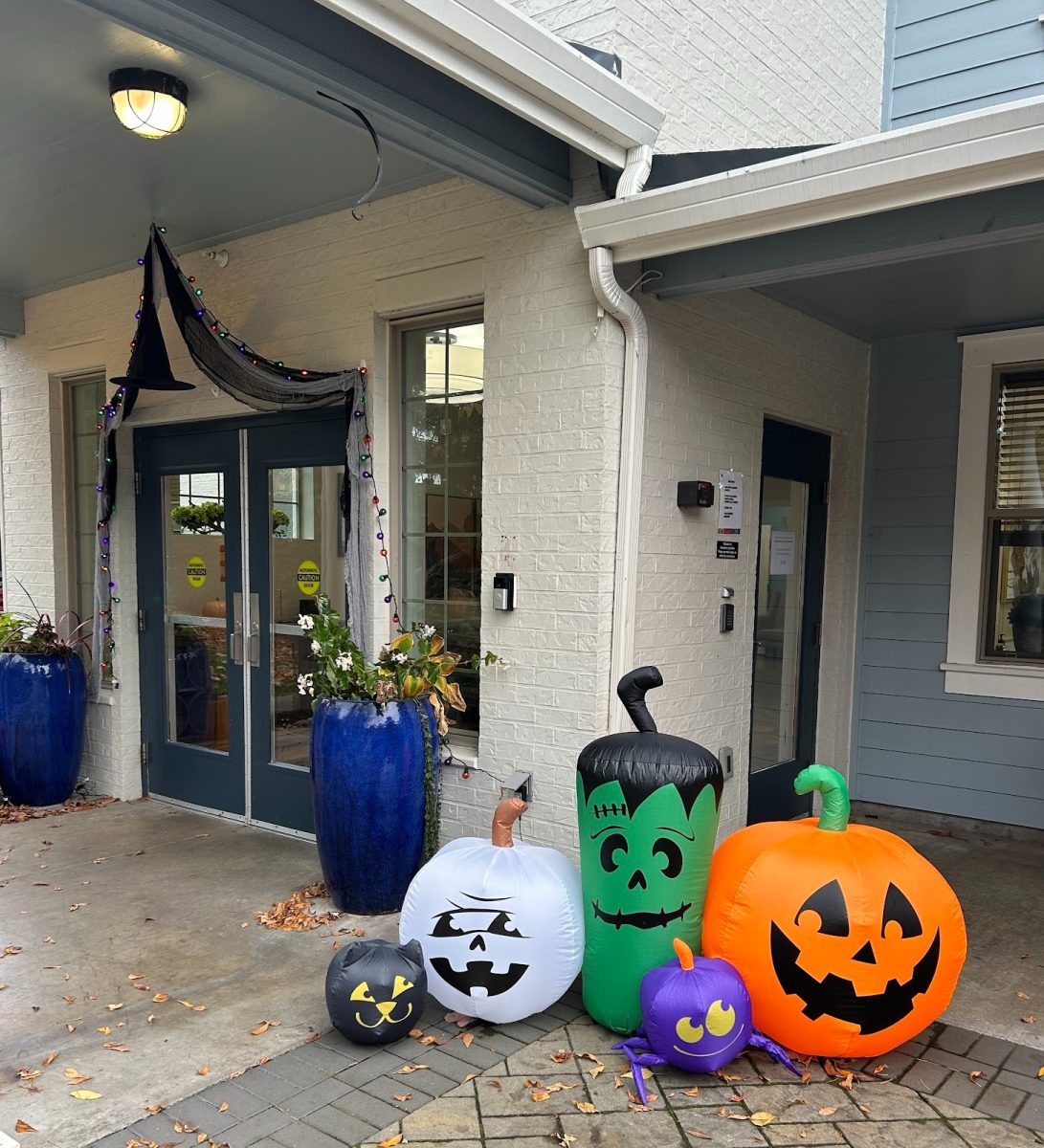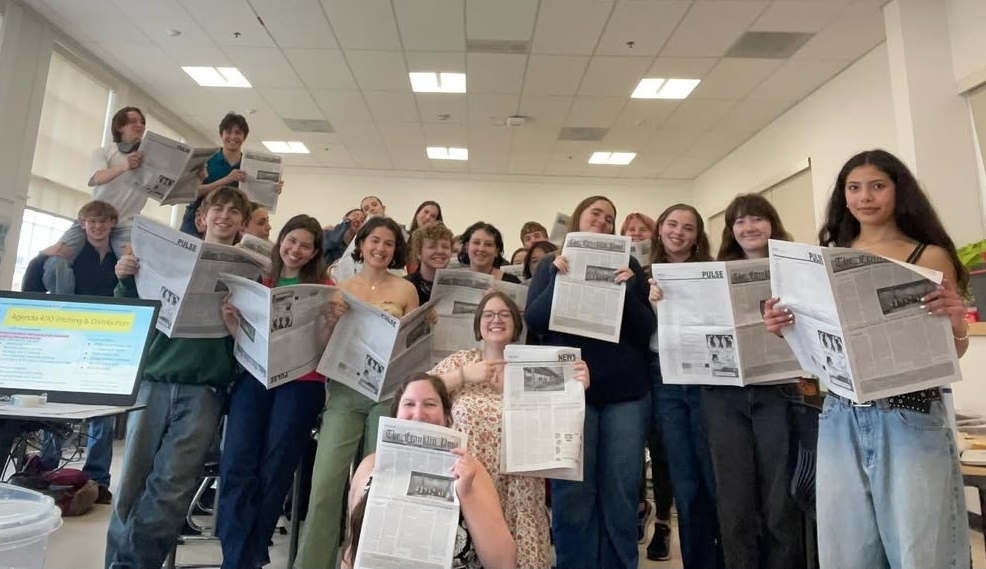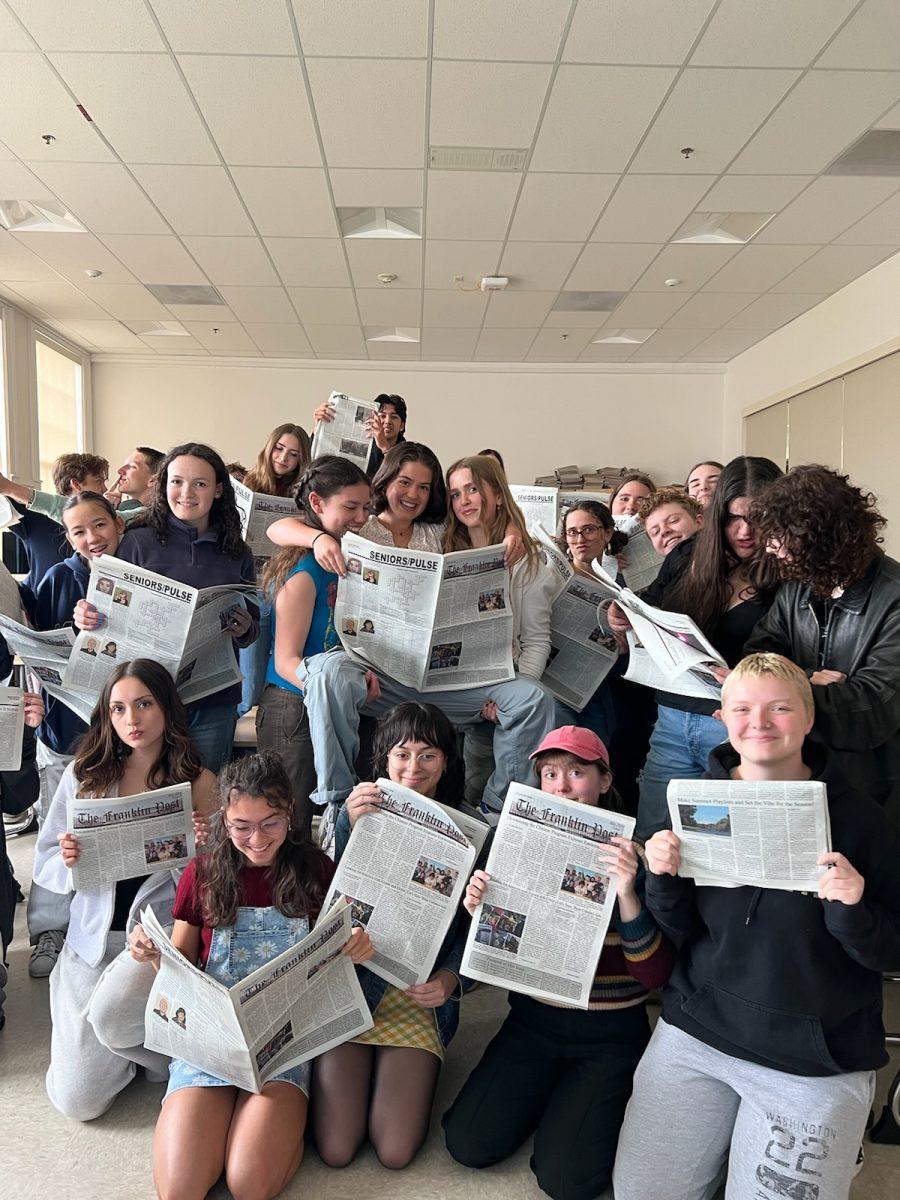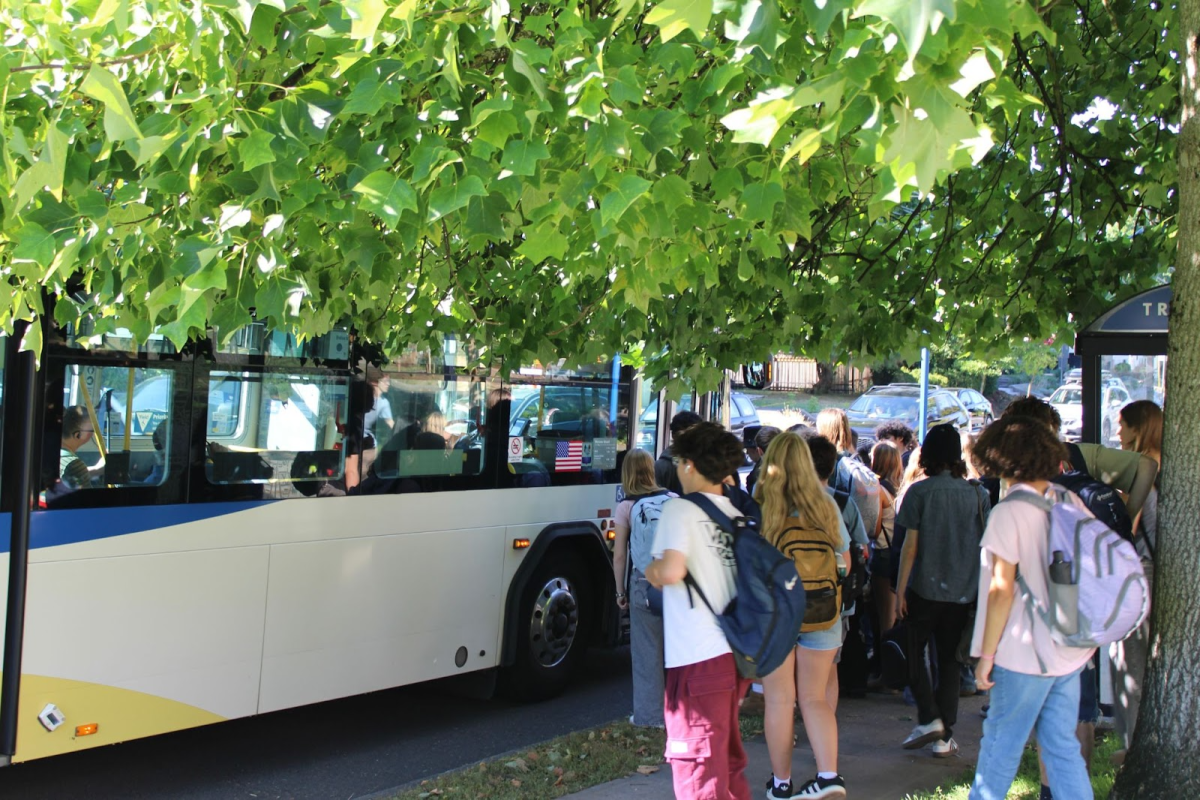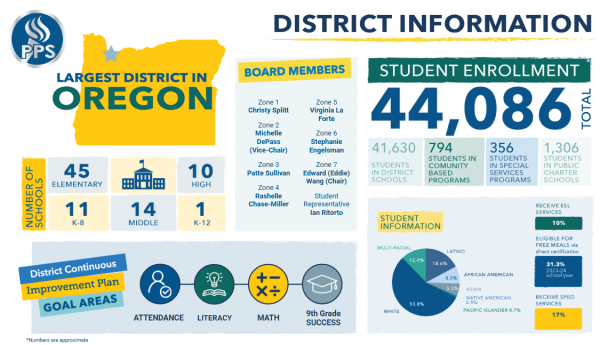
Portland Public Schools (PPS) is facing a worsening problem: enrollment is declining. According to Richard Smith, the senior director of data and accountability for PPS, the school district has about 44,000 students this year, including students at charter and community-based organization schools, which is 700 fewer students than last year. Smith explains that PPS has seen a steady decrease in enrollment over the last seven years.
According to the PPS Budget Process 2025-26 webpage, “Fewer students are enrolling in PPS, but the district still operates the same number of school buildings. Because state funding is based on student numbers, fewer students mean less funding.” Since the 2022-23 school year, PPS has had to make many major budget cuts. In the current school year, 2025-26, PPS had to make $40 million reductions that impacted both individual schools and district administrative budgets. A recent school board meeting forecasted a 50 million deficit for the next fiscal year.
PPS enrollment is predicted to continue to decline. According to Portland State University’s Population Research Center, which contracts with PPS to produce the yearly enrollment forecasts, PPS high schools are projected to experience an 18% decline in enrollment over the next eight years.
This decline is due in part to “housing prices increasing, more students and families moving out to other counties, and a decline in birth rates,” Smith explains. “We do have certain schools that have less enrollment than others, depending on where they’re located, and we have some schools that are just bursting at the seams,” Smith explains.
When enrollment declines, schools often decrease staffing as well, which can cause programs to be dropped, and grades or classes to be combined. This may also eventually cause some schools to close or combine.
Jefferson High School has struggled with enrollment for about a decade, with an average of about 500 students, while Franklin, in comparison, has nearly 2,000 students this year. Jefferson is impacted by “white flight” — where white families opt to attend schools in more white areas, like Grant High School, a trend exacerbated by their dual assignment program. The program allows students who live within the Jefferson boundaries to choose to go to Jefferson, McDaniel, Roosevelt, or Grant, depending on which part of the boundary they live in.
Portia Hall Rockne has been a social sciences teacher at Franklin for 27 years, and has previously taught at Jefferson. She feels that PPS has not supported Jefferson correctly, and believes that low enrollment has really hurt the school. Hall has noticed that well-meaning parents “school shop” for their children, especially when they are going into elementary school. Schools thrive when students and supportive parents are attending. A school like Jefferson might get a bad reputation due to a lack of programs resulting from low enrollment, so parents pull their kids out, causing a cycle of low enrollment.
PPS is currently trying to end the dual assignment program and turn Jefferson back into a comprehensive high school. “Over time, students choose the other schools because of the perception of more programming or more things going on there,” Smith explains. “If you look at the whole set of students who are in the dual zone and who could be going to Jefferson, it would actually be one of the largest high schools in PPS.”
Daisy Jimenez-Antonio, the student attendance coach at Franklin, stresses the importance of neighborhood perception when discussing enrollment. “When you’re looking at neighborhood schools, the perception of it comes from our community and what it gets painted as.” She refers to herself as a “product of PPS” who now serves students in PPS. Growing up, in her parents’ eyes, getting a good education meant going to a mostly white high school. Her neighborhood school would have been Jefferson or Roosevelt, but her parents had a negative perception of those schools, in part due to cultural or language barriers, and enrolled her at Grant instead.
PPS is aware of these trends and plans to take action on these issues, including through their enrollment campaign, a team that works to promote PPS to parents. PPS will explore ways to gain back enrollment and bring new families into the district. Smith and Jimenez-Antonio express that they want PPS parents to see the good education within their communities and the vast programs many schools offer.
